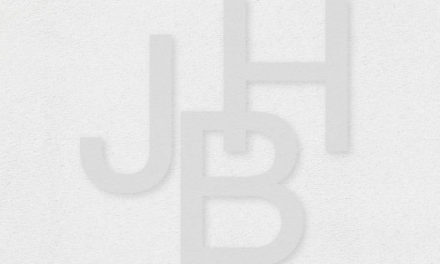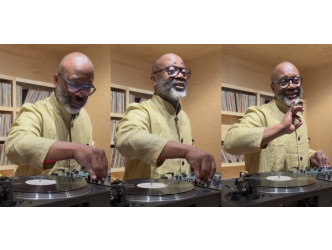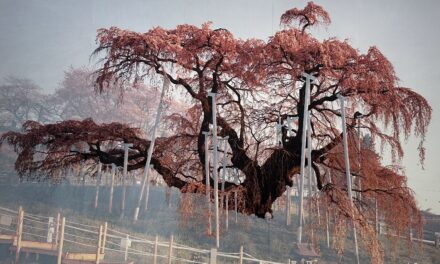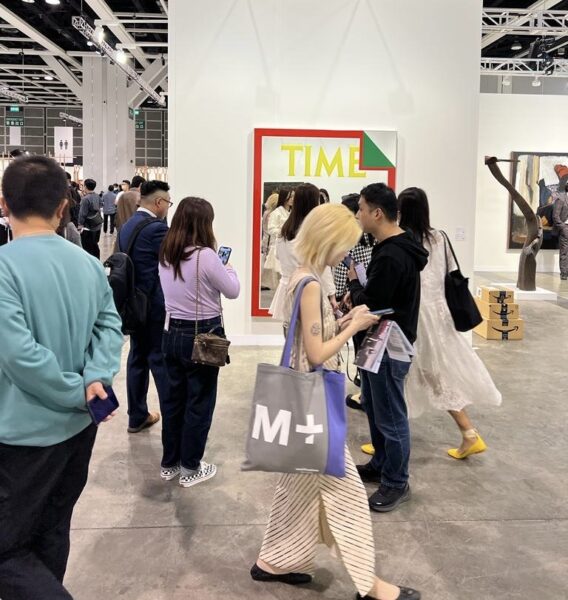
ABHK 2023
Draconian isolation
Times have been hard. For three years draconian isolation measures have been imposed in China and, to a lesser extent, in its commercial forward base, Hong Kong, while the effervescent city has also been the site of marked political opposition, subject to strict crackdowns.
Promising country
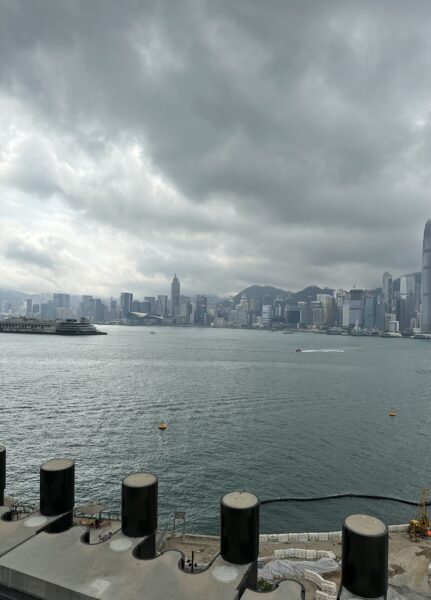
The view from M+
As the art market in Europe and the United States has been getting back on track, this country, considered to be the most promising on a global scale, was also in quarantine up until autumn 2022. With all of these traumas still in recent memory, the Art Basel Hong Kong fair (ABHK) was inaugurated on 22 March, with 177 exhibitors as opposed to 249 in 2019, before the public health crisis (see the report on ABHK in 2019 here).
The show, a great success
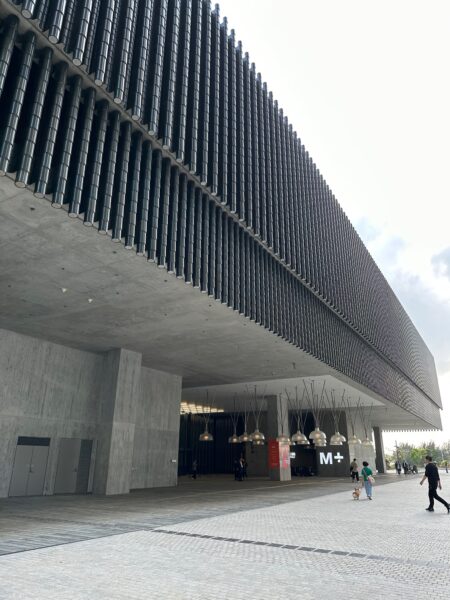
M+ museum
There were many questions surrounding the content and dynamism of the leading fair in this part of the world. Against all the odds, the show is a great success, and accompanies a maturing of the contemporary art scene in Hong Kong.
M+
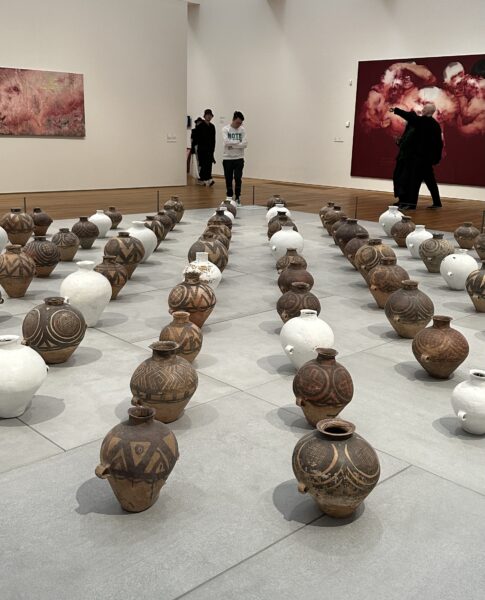
Ai Weiwei, M+ museum
In fact, a very ambitious museum opened in November 2021 on the island of Kowloon, dedicated to international contemporary art, Ink painting, moving images and design. The building, designed by Swiss Pritzer Prize laureates Herzog & de Meuron, houses among other things the largest collection of Chinese contemporary art in the world (over 1500 artworks from the 1970s to 2012).
Uli Sigg
It was donated by former Swiss diplomat Uli Sigg, who was present at ABHK and described the institution as a “spectacular machine” (see another interview with Uli Sigg here). For an art market to be well structured, it must be fuelled by solid foundations of knowledge.
Suhanya Raffel
This is what the institution offers with regards to Chinese contemporary art, as Suhanya Raffel, director of the institution, explains, mentioning the “definitive collection of a great period of the avant-garde” from this country.
Political Censorship
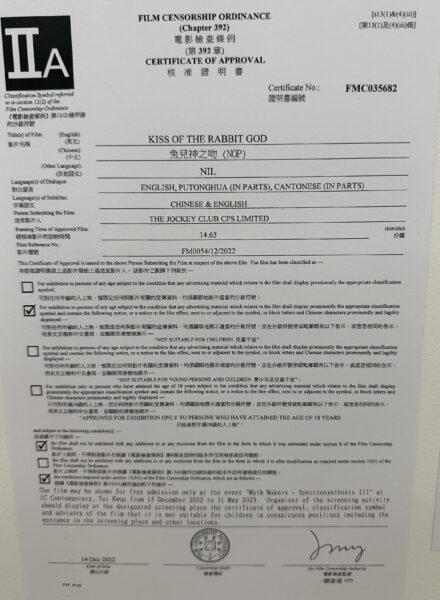
Censorship Ordinance
After the political upheavals that have taken place in Hong Kong, one of the key issues has been that of political censorship. Right in the city centre, one of the new cultural sites is the Tai Kwun complex, a giant former police station together with its prison. This is where Patrick Sun, a Taiwanese-Hongkonger collector, is displaying his captivating collection.
Myth Makers
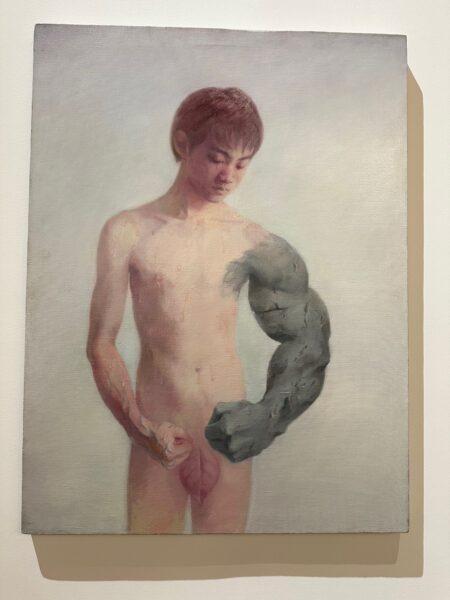
Shang Liang
Under the title “Myth makers”, it addresses homosexuality and questions of gender through a selection of primarily Asian artists. A number of works that are explicit about same-sex relationships are accompanied by a clearly marked permit from the local censorship board.
Noah Horowitz
“The Hong Kong that we know is coming back,” observes Noah Horowitz, CEO of Art Basel (see the interview with Noah Horowitz at Art Basel Miami Beach here), “I have great faith in its future. It is the gateway to the Asian market. We haven’t been subject to any censorship.”
Massimo de Carlo
The Italian gallerist Massimo de Carlo recently moved his Hong Kong gallery branch to Tai Kwun (see another interview with Massimo de Carlo here). During the fair he inaugurated an exhibition by the American artist Aaron Garber-Maikovska (born in 1978) whose colourful abstract paintings are the product of performances. They are sale between 80,000 and 100,000 dollars. His works are present in numerous American museums. Asia represents 25% of the gallerist’s business.

Aaaron Garber-Maikovska
Rirkrit Tiravanija
On the international contemporary art stage, the American gallery David Zwirner currently shows no signs of stopping collecting very high-profile artists (see an interview with David Zwirner here). In New York they are presenting one of their newcomers, the 91-year-old German painter Gerhard Richter (record at auction: 46.3 million dollars) (see reports on Gerhard Richter exhibitions here and here) and in Hong Kong they are also exhibiting for the first time the excellent Thai conceptual artist, Rirkrit Tiravanija (born in 1961) (see an interview with Rirkrit Tiravanija at the Luma Foundation here).
Umbrellas
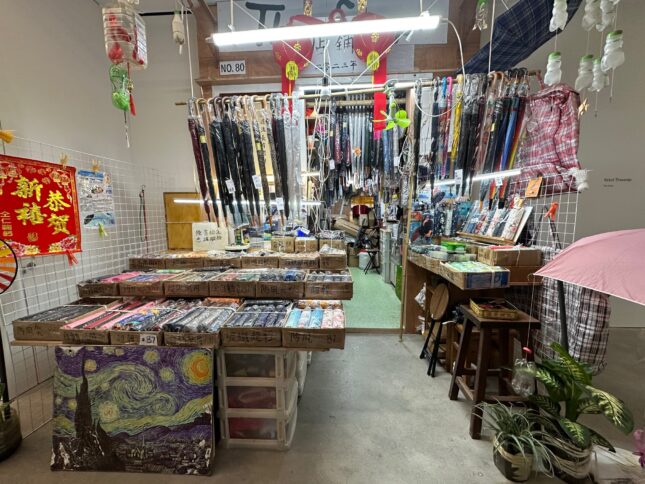
Rirkrit Tiravanija
The entire installation, which spans two floors, can be interpreted as a roundabout reference to the so-called Umbrella Revolution in Hong Kong, when protestors would use them to protect themselves from tear gas sprayed by the armed forces. We enter the space through the reconstruction of an umbrella repair shop.
Geography of the galleries
During Covid, the geography of the art galleries in Hong Kong was turned upside down. Although as Art Basel’s head of Asia, Adeline Oii, points out “no gallery closed down during this difficult period,” a number of them migrated to the commercial Central district towards the south of the city, in industrial areas (see the interview with Adeline Oii from 2019 here).
Gerhard Richter in HK
It is here, for instance, that the international firm Art Intelligence Global, founded by Amy Cappellazzo and Yuki Terase (see an interview with Amy Cappellazzo here), based in New York and Hong Kong, is showcasing an exceptional group of abstract paintings by Gerhard Richter (the prices range from around 1.2 million to 40 million dollars).
Tishan Hsu
It is in this same district, as well as at ABHK, that the young Empty gallery is exhibiting the work of the Chinese American artist revealed at the last Venice Biennale, Tishan Hsu (born in 1951). His paintings, in a futuristic style blending psychedelic abstraction with organic elements in relief, featuring body parts (on sale for 120,000 euros).
Pierre Soulages
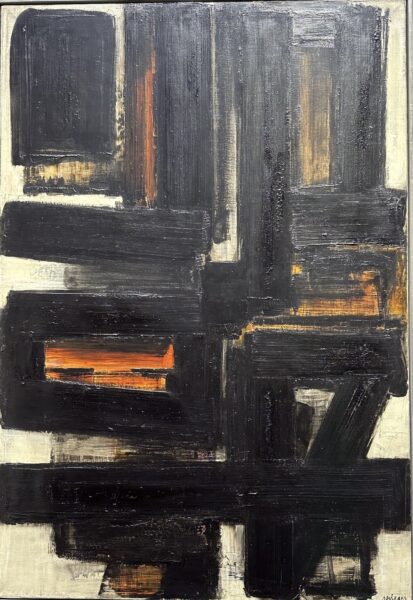
Pierre Soulages
One of the high-profile galleries at ABHK this year is LGDR from New York, Hong Kong and Paris (See here a report about the founders of the gallery). They are exhibiting two rare paintings from the 1950s by the master of French abstraction Pierre Soulages (1924-2022) (on sale for around 7 million dollars). For the co-founder of the gallery, Brett Gorvy, Soulages’s prices have increased by 25% since the centenarian’s death. He is planning an exhibition dedicated to him next September in New York, curated by the former director of the Centre Pompidou, Alfred Pacquement.
Beeple’s Human One
In another genre entirely, LGDR is also presenting works by the digital art superstar Beeple (born in 1981) (see an interview with Beeple here).
The M+ museum is displaying until July the artist’s masterpiece, “Human One”, a holographic life-size cube containing the image of a man walking through a landscape that evolves over time, together with its NFT version, which sold for 28.9 million dollars in 2021, at the peak of the market, to Canadian collector Ryan Zurrer.
Ryan Zurrer
At the fair, two holographic mini-cubes by the same artist which take up the commonplaces of classical art were sold on the first day for 700,000 dollars. “The crisis of digital art in the market is paradoxically accompanied by a massive recognition on the part of museums, from Moma to the Centre Pompidou via M+”, observes Ryan Zurrer. “This what general opinion seems to forget at the moment.”
Kusama and Mathieu

Yayoi Kusama
Proof of Chinese pulling power, numerous gallerists have brought artworks to the fair in the millions of American dollars, such as a monumental Pumpkin decorated with dots, dating from 2018, by the very media-hyped Japanese Pop artist Yayoi Kusama (born in 1929), on sale at Victoria Miro’s booth for 6 million dollars – Kusama is the subject of a retrospective at M+ – or a painting measuring 6 metres long by the French abstract artist who is once again very much in vogue, Georges Mathieu (1921-2012), in the space of Hong Kong gallery Kwai Fung (on sale for between 4 and 5 million dollars).

Georges Mathieu
Mak2
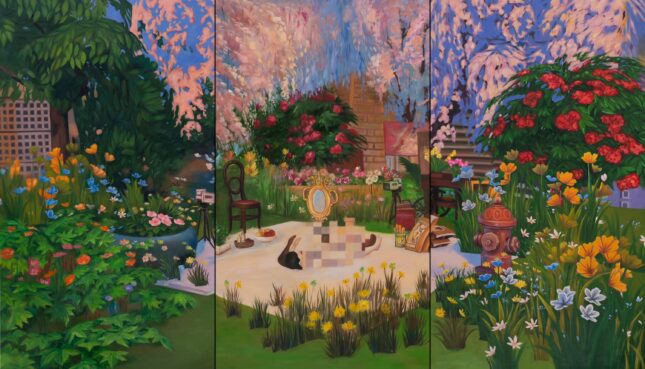
Mak2
But local demand is also very fond of new talents. At ABHK, Berlin’s Peres Project sold the works of an astonishing Hong Kong conceptual artist who works under the name Mak2 (born in 1989). She has made figurative paintings in three parts which resemble paradisiacal views of the metaverse, by putting a listing on the Taobao website calling for painters. Then the three parts that make up these imaginary landscapes are assembled (on sale for 35,000 dollars on average).
Daniele Balice
The Parisian gallerist Daniele Balice from Balice-Hertling reveals that Chinese collectors have been very active in their purchases over the Covid period. At the fair he is exhibiting, among others, the work of Ser Serpas (born in 1995), an American artist whose monumental painting that resembles simultaneously a mountain landscape and a detail from the human body was reserved by a Chinese museum (for around 100,000 euros). Ser Serpas will be the subject of an exhibition at the Bourse de Commerce in Paris next September (see an interview with Ser Serpas here).
Andre Fu
There can be no doubt that Hong Kong has, once again, become a global platform for showcasing contemporary art. The highly influential Hong Kong interior designer, Andre Fu, observes Hong Kong’s great return.
Angelle Siyang-Le
“Being a major financial centre, a free port that offers tax exemption with significant local demand, also endows the city with a considerable foundation for the longevity of its market,” concludes the new director of the fair, Angelle Siyang-Le.
Support independent news on art.
Your contribution : Make a monthly commitment to support JB Reports or a one off contribution as and when you feel like it. Choose the option that suits you best.
Need to cancel a recurring donation? Please go here.
The donation is considered to be a subscription for a fee set by the donor and for a duration also set by the donor.

